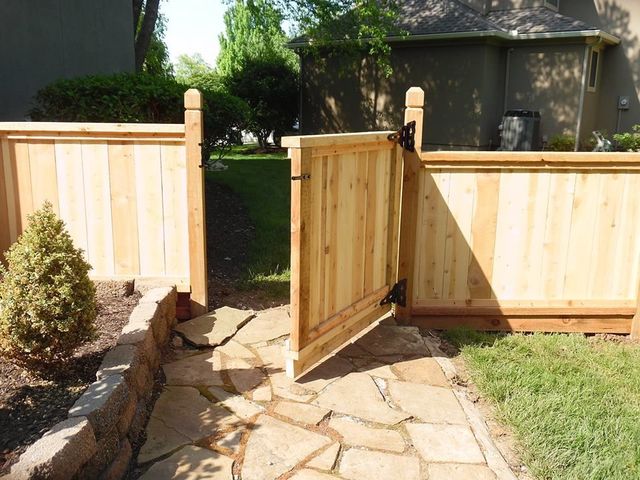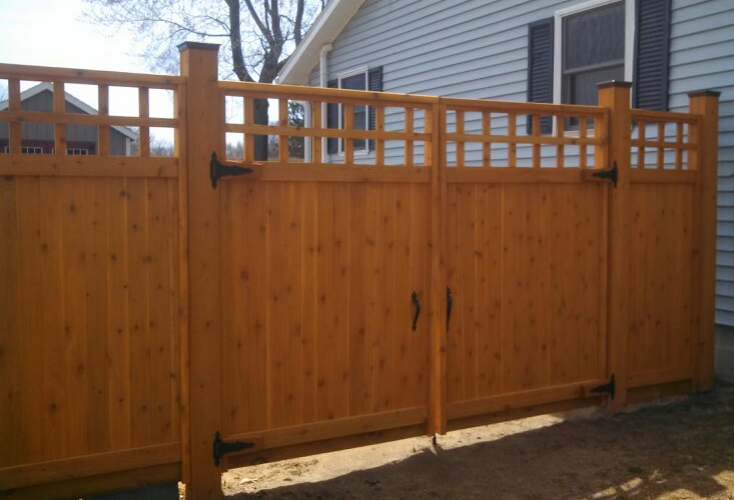All Categories
Featured

When it pertains to choosing the ideal fencing material for your property, timber, plastic, and light weight aluminum are among one of the most prominent alternatives. Each material supplies one-of-a-kind advantages that suit various requirements, choices, and budget plans. Recognizing the pros and cons of each kind can aid you make an educated decision based upon your top priorities, whether that's aesthetic charm, longevity, or maintenance requirements. Listed below, we damage down the benefits and negative aspects of these three typical fence materials.
Wood Fence. Pros:
Aesthetic Appeal: Wood fences provide an all-natural, traditional appearance that enhances most kinds of landscape design and style. They can be easily personalized with paint or tarnish, offering you the flexibility to create the best shade and coating for your residential property. Flexibility: Wood can be used to create a selection of fencing styles, from conventional picket fencings to extra modern-day designs like personal privacy fences or rustic ranch-style fencings. If your needs alter, it's very easy to customize or add to over time. Price: Timber is commonly a lot more budget friendly than plastic or aluminum, making it an eye-catching option for house owners on a budget plan. The initial expense of a timber fencing is normally less than the other materials. Disadvantages:

Maintenance Needs: Timber fences need routine maintenance, consisting of staining, securing, or paint to protect them from weathering, rot, and insect damages. Without correct treatment, timber can degrade swiftly. Longevity: Wood is prone to damage from insects like termites, and it can warp, crack, or split with time as a result of exposure to the elements. In areas with extreme climate condition, wood may need to be replaced much more often than other products. Restricted Lifespan: While timber fences can last for lots of years with correct care, they generally have a shorter life-span than plastic or aluminum fences. Plastic Fencing. Pros:
Reduced Upkeep: Among the largest benefits of plastic fence is its reduced upkeep demands. Unlike timber, plastic doesn't require to be repainted, discolored, or sealed. It's resistant to fading, breaking, or warping, making it suitable for homeowners who want a problem-free fencing. Durability: Plastic fences are immune and very sturdy to the aspects, consisting of UV rays, rain, and humidity. They're additionally unsusceptible bugs, such as termites, that can damage timber fences. Selection of Styles: Vinyl fences can be found in a wide variety of colors and styles, and lots of imitate the look of timber without the maintenance downsides. You can pick from personal privacy fences, picket fences, and even more to suit your requirements. Lengthy Life expectancy: With proper care, vinyl fencings can last years, far longer than wood fences, and they come with service warranties that provide satisfaction. Disadvantages:
Greater Preliminary Cost: While plastic fences can save cash on maintenance over the years, they tend to have a higher ahead of time price than wood fences, which may be a deterrent for some purchasers. Restricted Customization: While plastic fences are available in a selection of colors and designs, they do not have the modification adaptability that wood gives. You're restricted to the pre-designed panels available, which might not suit every distinct visual. Prospective for Fracturing in Cold Climates: In extreme chilly temperature levels, vinyl fences can become weak and might split under impact, making them much less appropriate for areas with freezing winters. Light weight aluminum Fence. Pros:
Longevity and Toughness: Aluminum is a lightweight yet strong product that stands up to rust and deterioration, making it optimal for seaside areas or places with high humidity. Light weight aluminum fences need marginal upkeep and can withstand the elements for several years. Visual Allure: Aluminum fencings use a smooth, modern-day appearance. They are available in a range of attractive styles and can be made use of to develop an extra elegant or modern look for your property. Reduced Maintenance: Light weight aluminum fencings do not need paint or securing, and they're immune to rust and corrosion, making them unbelievably reduced maintenance with time. Safety and security: Aluminum fences provide a greater level of safety and security compared to plastic or wood fencings as a result of their strong construction. They can be furnished with locks and gateways to give a protected border around your building. Disadvantages:

Expense: Aluminum fencings are commonly a lot more costly than timber or plastic fences, both in terms of products and setup prices. This higher rate factor can be a drawback for budget-conscious property owners. Much Less Privacy: Aluminum fences commonly have an even more open style, with pickets spaced apart to enable visibility with the fence. This might not be the ideal choice for your home if privacy is a priority. Prone to Denting: While aluminum is rust-resistant, it can still be dented or bent if struck with pressure, such as by an automobile or hefty equipment. While it will not corrosion, it might not keep its immaculate appearance if it gets harmed. Which Material is Right for You? Picking the best fence material depends on your details needs, spending plan, and long-term plans for your home. On the other hand, if you require a lasting, safe fencing with a sleek look, aluminum might be the right product for you.
Ultimately, consider your climate, maintenance preferences, and visual needs when picking your fence material. Each option has its strengths and weak points, yet with the right care and installation, all three can provide reliable and appealing borders for your building.
Latest Posts
Celebrate Extraordinary Birthdays at FunCity Hotel
Published Apr 20, 25
1 min read
NAPA AutoCare Certified: Trust Montclare Auto Repair for Quality Service
Published Apr 19, 25
2 min read
Full Circle Strategic Marketing - Supercharge Your Marketing Efforts with Tailored Strategies
Published Apr 19, 25
2 min read
More
Latest Posts
Celebrate Extraordinary Birthdays at FunCity Hotel
Published Apr 20, 25
1 min read
NAPA AutoCare Certified: Trust Montclare Auto Repair for Quality Service
Published Apr 19, 25
2 min read
Full Circle Strategic Marketing - Supercharge Your Marketing Efforts with Tailored Strategies
Published Apr 19, 25
2 min read